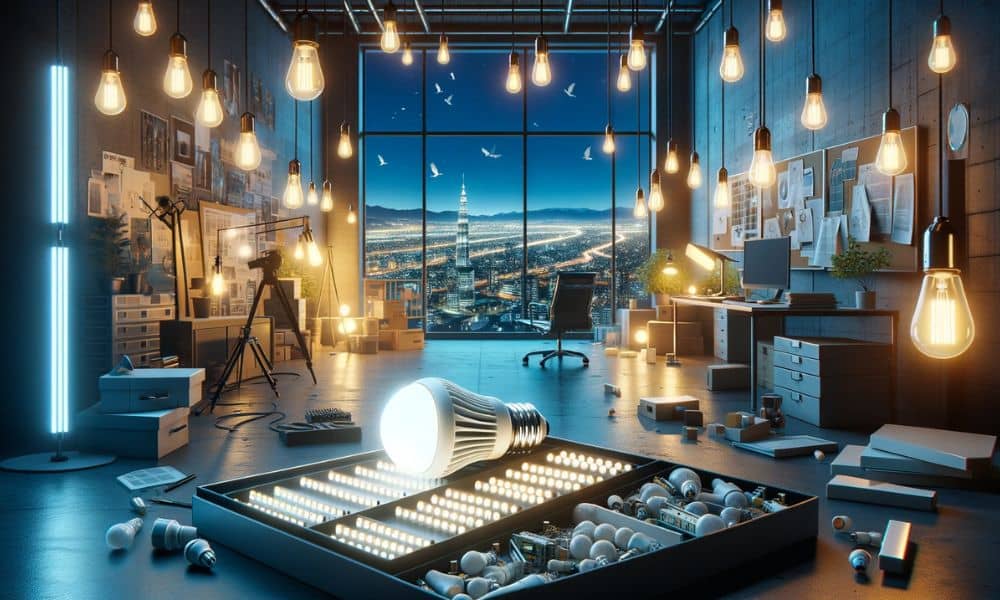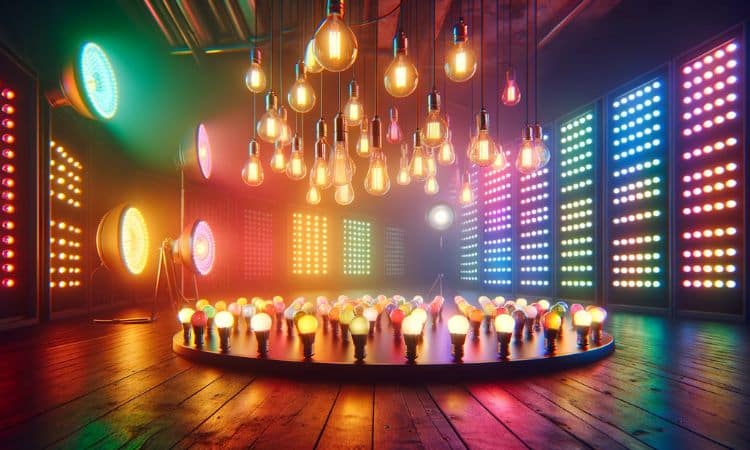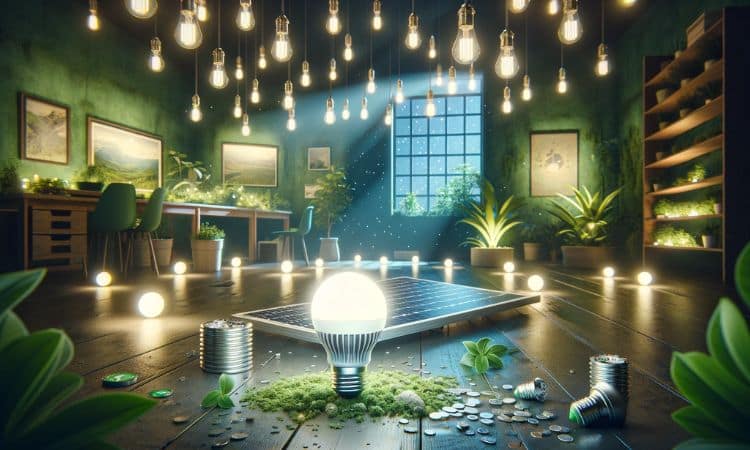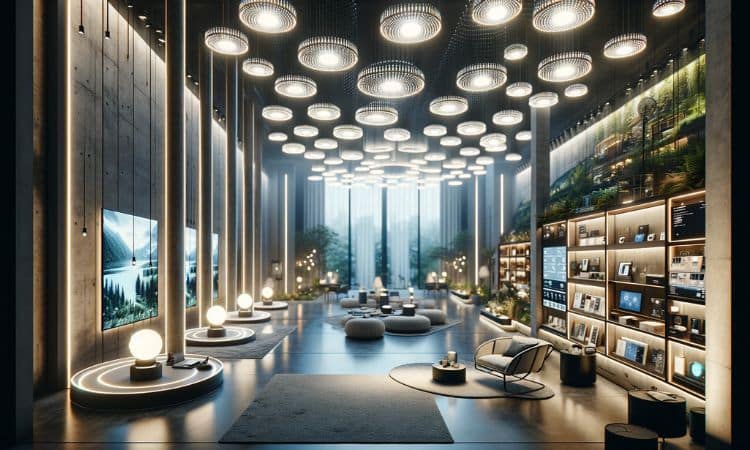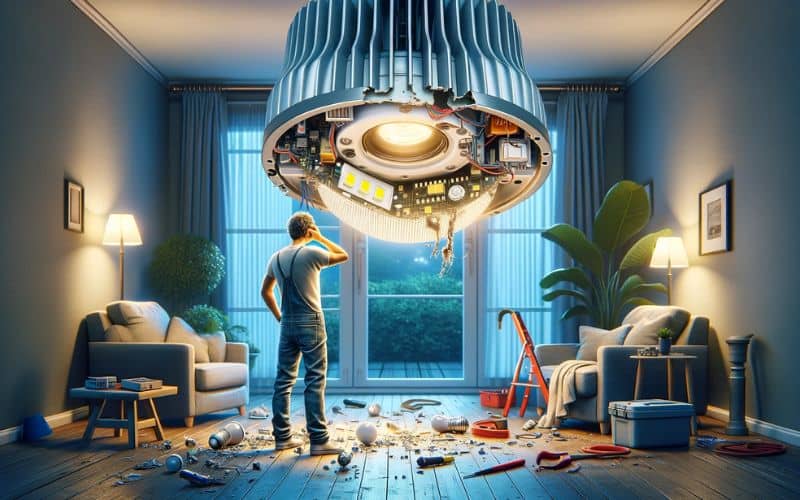What are the Advantages and Disadvantages of LED Lights
Written by Total Power Energy Team
Published:
Have you ever switched on a light and thought about the technology behind it? LED ((Light Emitting Diodes) lights are everywhere, from our homes to streets, glowing efficiently in the background.
Their rising popularity isn’t just a trend; it reflects their significant benefits. However, like any innovation, it comes with its set of pros and cons.
Understanding the advantages and disadvantages of LED lights is crucial for anyone looking to make an informed decision about their lighting choices.
Advantages of LED Lights
Energy Efficiency
One of the greatest benefits of LED lighting is its energy efficiency. LEDs use about 75% less energy than incandescent lamps and significantly outperform fluorescent lamps.
This efficiency translates to substantial electricity bill savings and a positive environmental impact.
Every LED light bulb you switch on brightens your space and contributes to a greener planet.
Durability and Lifespan
The longevity of LEDs is another remarkable benefit. An average LED bulb can last up to 50,000 hours, dwarfing the lifespan of traditional incandescent bulbs and fluorescent lights.
This extended lifespan means fewer replacements, reducing waste and saving both time and resources.
It’s not just about longevity; it’s about reliable, long-term illumination.
Colour Range
LED technology offers an impressive range of colors.
From warm white light to vibrant hues, the color range of LEDs surpasses that of traditional fluorescent lamps and incandescent bulbs.
This versatility makes LEDs ideal for both functional and aesthetic lighting applications.
Environmental Friendliness
The eco-friendliness of LEDs is a significant advantage of LED lighting.
They consume less power and have a longer lifespan, which means fewer resources are used over time.
Moreover, unlike some fluorescent lights, LEDs do not contain mercury, making them a safer choice for the environment.
Instant Lighting and Dimming
LEDs offer instant lighting and excellent dimming capabilities. Unlike fluorescent lamps, which can take time to warm up, LEDs light up immediately at the flick of a switch.
This instant lighting is complemented by their ability to dim smoothly, allowing for greater control over your space’s ambience and energy usage.
Improve Safety
Safety is a significant advantage of LED lighting. These lights emit minimal heat, making them less likely to cause accidents or fire hazards than incandescent light bulbs.
This feature is especially important in settings where safety is paramount, such as homes with children and pets.
Directional Lighting
LEDs excel in directional lighting. They emit light in specific directions, making them ideal for task lighting, accent lighting, or spotlighting.
This directional capability ensures that light is used efficiently and effectively, illuminating exactly where needed.
Design Flexibility
The small size and versatility of LEDs provide unparalleled design flexibility.
They can be used in various applications where traditional light bulbs wouldn’t fit.
This opens up a world of design possibilities, from sleek LED panels and strip lights to intricate lighting effects in architectural and landscape projects.
Smart Lighting Compatibility
LED technology is often synonymous with smart lighting.
Many LED systems are compatible with smart home technologies, allowing for remote control, scheduling, and color changes.
This compatibility enhances convenience and contributes to energy savings and a modern lifestyle.
Disadvantages of LED light
Higher Initial Cost
Despite their numerous advantages, LED lights come with a higher upfront cost compared to traditional lighting.
This initial investment can be a hurdle despite the long-term savings in energy bills and replacement costs.
It’s a factor worth considering, especially for large-scale lighting projects.
Dimming Limitations
While LEDs are celebrated for their dimming capabilities, they sometimes face compatibility issues with traditional dimming switches.
This can lead to flickering or uneven dimming, requiring specific LED-compatible dimmers.
It’s an aspect that requires attention while installing LED lighting systems.
Limited Reparability
Reparability is a challenge with LED lights. When an LED fixture fails, it often requires a complete replacement rather than a simple repair.
This aspect can be seen as less sustainable compared to repairing traditional light sources.
Blue Light and Sleep
Blue light emitted by some LEDs can interfere with sleep patterns.
Exposure to blue light in the evening can disrupt the body’s circadian rhythm, leading to sleep disturbances.
Choosing LEDs with warmer color temperatures for evening use is wise to mitigate this issue.
Sensitivity to Temperature
LEDs may be sensitive to extreme temperatures, which can affect their performance and lifespan.
In very hot or cold environments, LED lights may not function as efficiently or last as long as expected.
This sensitivity is an important consideration, especially in outdoor or industrial applications.
Complex Recycling
While LEDs are more eco-friendly than incandescent or conventional light, they can pose challenges in recycling due to their complex components.
Proper disposal and recycling are essential to prevent environmental harm and make the most of this technology.
Potentially Harmful Materials
Despite being mercury-free, some LED lights can contain other potentially harmful substances like lead and arsenic, particularly in their electronic components.
Safe disposal and handling are crucial to avoid environmental contamination and health risks.
What are the different types of LED lights?
- LED Bulb: The staple of LED lighting, LED bulbs are versatile and can replace traditional incandescent bulbs in most fixtures. They are ideal for general lighting in homes and offices.
- LED Tube: These are perfect for replacing fluorescent tubes in offices or industrial settings, offering better energy efficiency and longer life.
- LED Spotlights/Floodlights: Excellent for outdoor and security lighting, these LEDs provide focused or broad illumination, enhancing safety and visibility.
- LED Panels: Common in modern office environments, LED panels deliver uniform and sleek lighting, ideal for creating a contemporary aesthetic.
- LED Strips: Flexible and dynamic, LED strip lights are used for decorative lighting, under-cabinet lighting, and more, adding a creative touch.
- LED Downlights: Often found in residential and commercial spaces, LED downlights are a modern replacement for conventional recessed lighting, providing a clean and efficient light source.
- LED High Bay Lights: Designed for high-ceiling environments like warehouses, LED high bay lights offer powerful and consistent illumination.
- Smart LED Lights: These LEDs integrate with smart home systems for customisable and remote-controlled lighting options, bringing convenience and efficiency to the forefront.
- RGB LED Lights: Capable of displaying multiple colours, RGB LEDs add a playful and dynamic element to any space.
- LED Emergency Lights: Essential for safety, these LEDs illuminate during power outages, ensuring visibility and security.
How to Choose the Right One
When selecting the right LED light, consider these key points:
- Purpose and Location: Assess the area where the LED light will be used. Different spaces require different types of lighting.
- Brightness and Color Temperature: Determine your LED bulb or fixture’s needed brightness (lumens) and colour temperature (warm or cool).
- Energy Efficiency: Look for LED lights with high energy-efficiency ratings to maximize savings and environmental benefits.
- Compatibility: Ensure the LED light is compatible with existing lighting systems and fixtures.
- Quality and Brand: Choose reputable brands for reliable performance and longevity in your LED lighting solution.
- Cost vs. Benefit: Consider the initial cost against long-term savings in energy and maintenance.
Bottom line
the pros and cons of LED lights highlight a significant shift in the lighting industry.
LED technology’s energy efficiency, longevity, and versatility offer numerous benefits, making it a smart choice for almost any lighting solution.
However, considerations like cost, compatibility, and environmental impact are essential in making an informed decision.
Transform your space with our professional lighting installation services. Experience energy-efficient, long-lasting lighting solutions tailored to your needs. Contact Total Power Energy Company today for a brighter, greener future.
Frequently Asked Questions
Are LED light bulbs worth the money?
Absolutely. The long-term savings in energy and maintenance costs make LED bulbs a wise investment despite the higher initial price.
How much energy can an LED bulb save?
LED bulbs are up to 80% more energy-efficient than traditional incandescent lamps, translating to significant savings on energy bills.
Why are LED bulbs better for the environment?
LED lights reduce energy consumption and carbon emissions and contain no hazardous substances like mercury, making them more eco-friendly than incandescent or fluorescent lamps.
Do LED lights work well in outdoor settings?
Yes, LED lights are excellent for outdoor lighting due to their durability and resistance to cold temperatures, making them ideal for security lights, garden lights, and more.
Can LED lights be used in artistic and creative applications?
Definitely, the flexibility, colour range, and dimming capabilities of LED lights make them perfect for artistic installations, stage lighting, and creating an ambience in any space.
Total Power energy content Team
Total Power Energy content team provide valuable tips and guidance on electrical information.
Our writers are experienced in the electrical field and produce high-quality content such as electrical safety, installation, repair, etc.
Our goal? To help you work safely and smartly. Our advice is easy to follow whether you’re at home or on the job. Stay safe and confident with our help!

